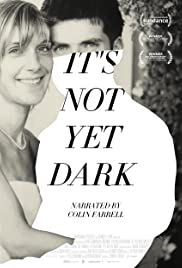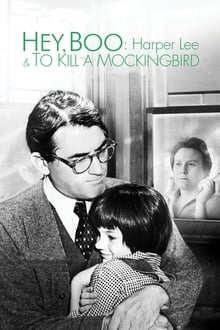
The story of Simon Fitzmaurice, a young filmmaker who becomes completely paralyzed from motor neuron disease but goes on to direct an award-winning feature film through the use of his eyes.
You May Also Like

An intimate portrayal of the everyday lives of Carthusian monks of the Grande Chartreuse, high in the French Alps (Chartreuse Mountains). The idea for the film was proposed to the monks in 1984, but the Carthusians said they wanted time to think about it. The Carthusians finally contacted Gröning 16 years later to say they were now willing to permit Gröning to shoot the movie, if he was still interested.

“Downton Abbey” star Elizabeth McGovern narrates an intimate look at the life and reign of Queen Elizabeth II as we celebrate Her Majesty’s 90th birthday.

Hey, Boo explores the life of reclusive author Nelle Harper Lee, shedding light on the context and history of her Pulitzer Prize-winning novel To Kill a Mockingbird.

An unnamed man narrates the downward trajectory of his life from beyond the grave, from delinquency to the string of fateful decisions and foolhardy moves that tied him inextricably to the opiate that was the elusive love of his life.

Not Available

Thousands of terracotta warriors guarded the first Chinese emperor’s tomb. This is their story, told through archeological evidence and reenactments.

Stephen Fry embarks on a journey to discover the stories behind some of the world’s most fantastic beasts that have inspired myths and legends in history, story-telling and film.

1964 was the year the Beatles came to America, Cassius Clay became Muhammad Ali, and three civil rights workers were murdered in Mississippi. It was the year when Berkeley students rose up in protest, African Americans fought back against injustice in Harlem, and Barry Goldwater’s conservative revolution took over the Republican Party. In myriad ways, 1964 was the year when Americans faced choices: between the liberalism of Lyndon Johnson or Barry Goldwater’s grassroots conservatism, between support for the civil rights movement or opposition to it, between an embrace of the emerging counterculture or a defense of traditional values.

Could the chemicals found in marijuana prevent and even heal several deadly cancers? Could the tumor regulating properties of cannabinoids someday replace the debilitating drugs, chemotherapy, and radiation that harms as often as it heals? Discover the truth about this ancient medicine as world renowned scientists in the field of cannabinoid research explain and illustrate their truly mind-blowing discoveries. QUOTES: “What If Cannabis Cured Cancer summarizes the remarkable research findings of recent years about the cancer-protective effects of novel compounds in marijuana. Most medical doctors are not aware of this information and its implications for prevention and treatment. If we need more evidence that our current policy on cannabis is counterproductive and foolish, here it is.” -Andrew Weil, M.D. “A hugely important film” – Julie Holland, M.D. NYU School of Medicine

The incredible story of two small robots sent by the Soviets to the moon. Designed in secrecy by Soviet laboratories in the 1960’s, this is one of the greatest technological achievements in the history of the USSR. With former USSR space archives, along with recollections by several of the key participants in the Lunokhod program, the true story of the Russian lunar robots, can finally be told!

Uncovering the haunted secrets at one of America’s largest Train Museums with a Team of Paranormal Investigators, Museum employees and Historians.

Education is increasingly affected by technological advance. How the changes affect the child are shown in this far-ranging study of what is new in educational theory and practice. Appearing in the film are several leading educators and innovators, including Dr. Jerome Bruner of Harvard University and host-narrator Dr. Marshall McLuhan.